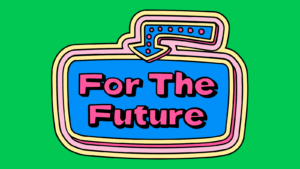Student-Led Learning – A Journey
Books, bells, desks, students sitting in rows, teachers talking and writing on blackboards. This has been going on for centuries and, although teachers and experts have stated repeatedly that urgent changes need to be made, we still can’t seem to shift away from the teacher centeredness present in most schools worldwide.
We have been teaching every single student the very same way, even though we know that they all learn in different styles. We have crammed them all into a classroom, with a specific time to start and a specific time to end their learning even though we, as teachers, know that learning has absolutely no time to begin and let alone to end. The shift from teacher-centered lessons to student-led classes is a must. But why is it so hard? What are the constraints? Why are teachers and students so resistant and are not able to go through this transition with ease?
I believe one can answer some of the questions above, but most of all, I believe teachers are wary of losing control – which is understanding. Classes are usually packed with 30 to 40 students who are not used to working in pairs or teams. These students do not know how to work collaboratively.
Classrooms are not prepared for student-led lessons
We know that they need to understand the process and the outcomes, but we have never taught them. So, what can we expect? Even the architectural structure of the classrooms is not prepared for student-led lessons. So yes… it takes training. It takes time, patience, and it takes change. Also,It means a change in the teacher’s, student’s and principal’s mindset. It will not happen from one class to the next, and will not happen in a month or even two. It takes time. However, it is a shift that must happen… and urgently, if we want our students to be engaged and motivated and ready for the future that we cannot predict.
Student-led learning is most of all about engaging students in the process of learning. Making learning meaningful, personalised and collaborative. It means giving students a voice and a choice in their own learning, so they become autonomous learners. What does it mean to be an autonomous learner? Does it mean they learn alone? Without the need for a teacher?
Being autonomous means students have ownership of their own learning
No. It means they are capable of understanding the way they learn and use the necessary strategies to accomplish their goals for learning a certain topic, by taking risks. Unfortunately, our learning system punishes errors and does not allow risk- taking. Being autonomous means students have ownership of their own learning, that they understand why they are learning a certain topic, how they might learn it best and where they can apply the knowledge they learned. But before that, we must teach respect, we must teach discipline, so we must teach and understand the emotional intelligence before anything else. Students and teachers must walk in each other’s shoes to understand the process.
For all this to happen, the first thing that must change is the basic concept of the school’s architecture. Not only inside the classrooms, where flexible seating is a must but the whole layout of the school. Maybe not even have aged specific classrooms, but topic-specific ones. Students should be able to move around and engage in collaborative open spaces.
The teacher should not be at the front of the room lecturing; the teacher should be everywhere
However, for that to happen, teachers need to get to know their students. Understand their needs and anxieties. Understand their weaknesses and strengths and, most of all, understand the fact that students need to feel compelled to be part of the school community and need to know what they are learning and why. And again, for teachers to be able to do this, they need more personalised time with their students. And we can only do this is we have a student-centered approach. The teacher should not be at the front of the room lecturing; the teacher should be everywhere, interacting with all the students at an individual level, while they are working on their projects and their own skills. The teacher is there challenging them, questioning them and guiding them through the learning process.
Learning happens anytime and anywhere, beyond the school walls. Students should feel that what they are learning within the school walls is directly related to their world outside the premises of the school. Again…there is no specific time to start and a specific time to end their learning. But schools are still constricted to times, bells and thinking inside the box. Whereas our students have already been born outside the box.
Below I have listed a few ideas and approaches of how one can encourage student-led learning:
Learning stations:
Divide the class into smaller groups, each working on a different activity. After some time, have the groups rotate. See more here
Jigsaw:
Divide students into smaller groups, giving each member of the group a specific role. After some time, change the grouping format, having all the members who were assigned that specific role sit together and share. Read more about it here.
Flexible seating:
Students need to have space to walk around and exchange ideas and collaborate with their peers. Desks are obstacles for flexible seating. Tables work better.
Reading time:
Unfortunately, we are living in a world where reading has been broken into smaller pieces, reduced to reading in order to fill out worksheets and diagrams. Working on reading strategies is a must; however, we desperately need students to dive into the world of imagination and knowledge through the love of reading books. Giving time for individual reading is a must; reading different genres, analysing characters and building up their own reading identity.
Learning targets, clear rubrics and feedback:
one can only have student- led lessons if students are aware what they are supposed to learn and why. Using learning targets, rubrics and constant feedback is crucial in order to lead interactive lessons.
Personalized learning:
give students time to work on a personal project. The idea in 20 time project is amazing and allows students to think, create and innovate according to their passions.
Project Based Learning:
PBL is about making connections between what is happening outside the classroom walls and the content. It is about using your student’s skills, so they can realise that they are creative, autonomous and enthusiastic learners. It is based on a challenging question and after much inquiry, discussion and research culminates in realistic presentations. Check out our book and read more here.
Menus:
giving students different options and different orders for completing certain assignments. When students have choice, they tend to explore their different learning strategies.
Differentiate instruction:
you can differentiate your instructions in various different ways. By differentiating the content, the process, the product or even the learning environment. You can use Bloom’s taxonomy to help differentiate your lessons.
Collaborative learning:
Although most people still have the concept that good classrooms are quiet ones, we know that students learn by talking, exchanging ideas and working collaboratively. Classrooms must expose students to these types of experiences, where working in teams, groups and pairs to accomplish a certain goal is the norm. Not that individual learning should be abandoned, individual learning and collaborative learning need to go hand in hand.
Using thinking routines:
Thinking routines are brilliant techniques that allow students to think and understand the way they think. It helps them organise their thoughts and gives them time to process the content. See more here.
Index cards:
Using index cards to have students begin a conversation, take notes of what they are reading, write chain stories, create games, using them as exit cards and many more ideas.
Student-led conferences:
Having student lead the parent`s meeting. Have students show their work and what they learned and how. The conference is based on student’s learning targets. Students are in charge of showing what they learned. Read more here.




